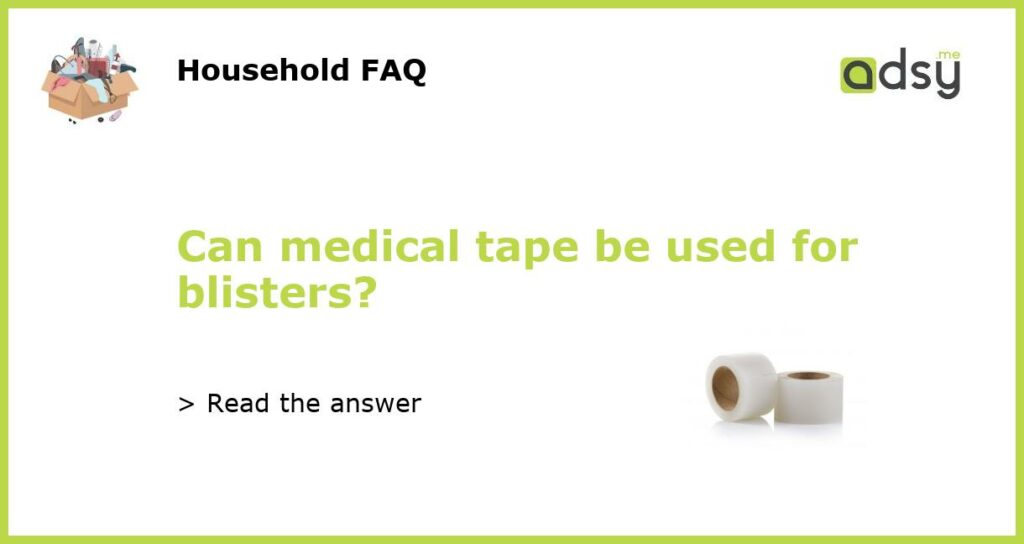What is medical tape?
Medical tape is a type of adhesive bandage that is used to secure medical dressings and equipment to the skin. It is designed to stick to the skin for a certain period of time, without causing any irritation or discomfort. Medical tape is made of a variety of materials, including paper, cloth, synthetic materials and silicone. It is commonly used in hospitals, clinics, and other healthcare facilities, and can also be purchased for personal use.
What are blisters?
Blisters are fluid-filled sacs that form on the skin as a result of injury, friction, burns and other types of skin damage. They typically appear as small, round bumps and can be filled with clear or yellowish fluid. Blisters can be painful and can interfere with daily activities such as walking and exercising. They can also lead to infection if not treated properly.
Can medical tape be used for blisters?
Yes, medical tape can be used to help protect blisters and reduce pain and discomfort. Medical tape can help to keep the skin around the blister clean and dry, prevent the blister from rubbing against other surfaces, and support the healing process. It is important to use medical tape that is gentle on the skin, and to avoid covering the blister completely to allow the skin to breathe and heal properly.
How to use medical tape for blisters?
To use medical tape for blisters, start by cleaning the affected area with soap and water or rubbing alcohol. Dry the skin thoroughly, and then apply a small amount of antibiotic ointment to the blister to help prevent infection. Next, cut a piece of medical tape that is slightly larger than the blister, and place it over the blister, leaving a small opening at one end to allow the skin to breathe. Press gently on the edges of the tape to ensure it sticks to the skin properly. Repeat this process as needed until the blister has healed.
When to seek medical attention?
While medical tape can be a useful tool for treating blisters, it is important to seek medical attention if the blister is large, painful, or located in a sensitive area such as the face or genitals. If the blister is accompanied by signs of infection such as redness, warmth, swelling, or pus, it is important to seek medical attention immediately to prevent serious complications.






